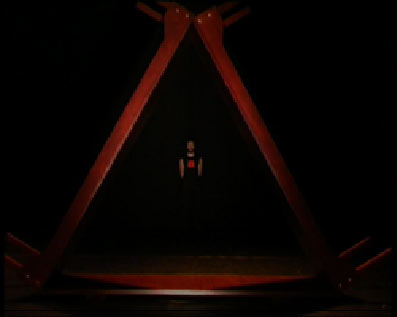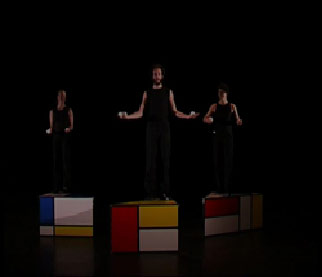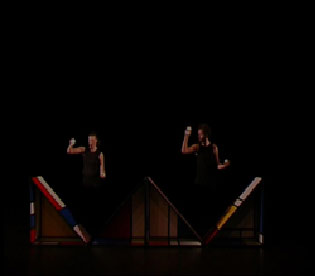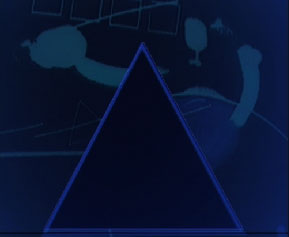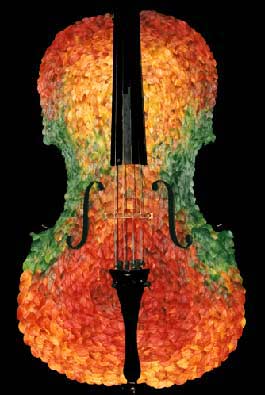|
|||||||||||||
 |
|||||||||||||
| |||||||||||||
|
Different angles and speeds of throw result in different rhythmic building blocks which, when using 3 or more balls, lead to complex and versatile sound patterns. At the same time it provides a feast for the eyes as the movement becomes one with the sound.
|
||||||||||||
|
Setting up the performance group ‘K-DNK’ (’ker-dunk’: the sound of a ball hitting two walls) with Kati Yla-Hokkola and Sean Gandini allowed for further experimentation. Aided by the Jerwood Foundation they premiered their performance ‘No Exit’ in 2004. Experiments are continuing with cubes, diamonds, upside down triangles, slopes, moving angles, large xylophone bars and more.
|
||||||||||||
|
Interest in combining film with performance led to a new show ‘Trimba’ which included specially made animations to provide a backing for and counterpoint to the live performance. The animations were inspired by the pioneering absract films of Oskar Fischinger, the Witney brothers, Jules Engel and more. The show has yet to be performed after freak storms the night before the premier at Glastonbury Festival 2005 left the set under water and the projection screen broken! Next time.
|
||||||||||||
|
|||||||||||||
|
The making of the album ‘Airstream’ presented the opportunity to create a cover to complement the feel of the music. Deciding upon presenting the main instrument, the cello, in a new light he spent three days and nights laying the autumnal leaves outside the window onto his cello. A still, frosty morning allowed the finished cello to be taken outside and photographed.
|
||||||||||||
|
Future projects include developing new systems for translating movement into sound and vice versa. Any MAX/MSP or Jitter users interested in collaborating please get in contact. If you have an interesting project that is concerned with how sound and vision meet let me know and I’ll put a page up about it.
|
||||||||||||
